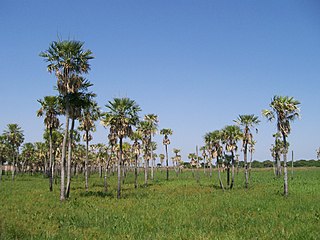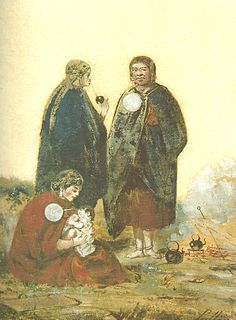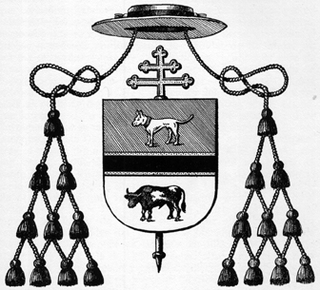
Chaco, officially the Province of Chaco, is one of the 23 provinces in Argentina. Its capital and largest city, is Resistencia. It is located in the north-east of the country.

Tucumán is the most densely populated, and the second-smallest by land area, of the provinces of Argentina.

Salta is a province of Argentina, located in the northwest of the country. Neighboring provinces are from the east clockwise Formosa, Chaco, Santiago del Estero, Tucumán and Catamarca. It also surrounds Jujuy. To the north it borders Bolivia and Paraguay and to the west lies Chile.

Santiago del Estero, also known simply as Santiago, is a province in the north of Argentina. Neighbouring provinces, clockwise from the north, are Salta, Chaco, Santa Fe, Córdoba, Catamarca and Tucumán.

Santiago del Estero is the capital of Santiago del Estero Province in northern Argentina. It has a population of 252,192 inhabitants, making it the twelfth largest city in the country, with a surface area of 2,116 km². It lies on the Dulce River and on National Route 9, at a distance of 1,042 km north-northwest from Buenos Aires. Estimated to be 455 years old, Santiago del Estero was the first city founded by Spanish settlers in the territory that is now Argentina. As such, it is nicknamed "Madre de Ciudades". Similarly, it has been officially declared the "mother of cities and cradle of folklore."
The Toba people, also known as the Qom people, are one of the largest indigenous groups in Argentina who historically inhabited the region known today as the Pampas of the Central Chaco. During the 16th century, the Qom inhabited a large part of what is today northern Argentina, in the current provinces of Salta, Chaco, Santiago del Estero, Formosa and the province of Gran Chaco in the southeast of the Department of Tarija in Bolivia. Currently, many Toba, due to persecution in their rural ancestral regions, live in the suburbs of San Ramón de la Nueva Orán, Salta, Tartagal, Resistencia, Charata, Formosa, Rosario and Santa Fe and in Greater Buenos Aires. Nearly 130,000 people currently identify themselves as Toba or Qom. With more than 120,000 Qom living in Argentina, the Qom community is one of the largest indigenous communities in the country.
The Diaguita people are a group of South American indigenous people native to the Chilean Norte Chico and the Argentine Northwest. Western or Chilean Diaguitas lived mainly in the Transverse Valleys incised in a semi-arid environment. Eastern or Argentine Diaguitas lived in the provinces of La Rioja and Catamarca and part of the provinces of Salta, San Juan and Tucumán. The term Diaguita was first applied to peoples and archaeological cultures by Ricardo E. Latcham in early 20th century.

Lule is an indigenous language of northern Argentina.

Mataguayo–Guaicuru, Mataco–Guaicuru or Macro-Waikurúan is a proposed language family consisting of the Mataguayan and Guaicuruan languages. Pedro Viegas Barros claims to have demonstrated it. These languages are spoken in Argentina, Brazil, Paraguay, and Bolivia.

The Aónikenk people, also referred to by the exonym Tehuelche, are an indigenous people from Patagonia in South America, with existing members of the group currently residing in the southern Argentina-Chile borders.

Spanish is the language that is predominantly understood and spoken as a first, or second language by nearly all of the population of the Republic of Argentina. According to the latest estimations, the population is currently greater than 45 million.
Vilela is an extinct language last spoken in the Resistencia area of Argentina and in the eastern Chaco near the Paraguayan border. Dialects were Ocol, Chinipi, Sinipi; only Ocol survives. The people call themselves Waqha-umbaβelte 'Waqha speakers'.

The Central Northern Railway was the first 1,000 mm railway built by the Argentine State Railway. Its aim was to extend the existing British-owned Central Argentine 5 ft 6 in railway from Córdoba to Tucuman and metre gauge was chosen for economic reasons.

Argentina has 35 indigenous groups according to the Complementary Survey of the Indigenous Peoples of 2004, the Argentine government's first attempt in nearly 100 years to recognize and classify the population according to ethnicity. In the survey, based on self-identification or self-ascription, around 600,000 Argentines declared to be Amerindian or first-generation descendants of Amerindians, that is, 1.49% of the population. The most populous indigenous groups were the Aonikenk, Kolla, Qom, Wichí, Diaguita, Mocoví, Huarpe peoples, Mapuche and Guarani In the 2010 census [INDEC], 955,032 Argentines declared to be Amerindian or first-generation descendants of Amerindians, that is, 2.38% of the population. Many Argentines also identify as having at least one indigenous ancestor; a genetic study conducted by the University of Buenos Aires in 2011 showed that more than 56% of the 320 Argentines sampled were shown to have at least one indigenous ancestor in one parental lineage and around 11% had indigenous ancestors in both parental lineages.

The Mocoví are an indigenous tribe of the Gran Chaco region of South America. They speak the Mocoví language and are one of the ethnic groups belonging to the Guaycuru peoples. In the 2010 Argentine census, 22,439 people self-identified as Mocoví.
Bartolomé Jaimes was a Spanish nobleman, who served in the conquest of Perú, Chile and Tucumán. He participated in the founding of the city of Córdoba by Jerónimo Luis de Cabrera.

Julián de Cortázar y Carrillo was a Spanish-born prelate of the Catholic Church in the part of New Spain that is now Colombia. From 1618 to 1627 he served as Bishop of Córdoba in Argentina, and from 1627 to 1630 as Archbishop of Santafé en Nueva Granada in New Spain.

The Lule people, or Lules, are an indigenous people in Argentina. They were originally encountered in the area that is now the Salta Province of Argentina, as well as in nearby areas of modern-day Bolivia and Paraguay. They were later displaced by the Wichí toward the south of Salta Province, the north-east of Santiago del Estero Province, and eastern Tucumán Province. The Lule language is distantly related to the Vilela language, and together they form the Lule-Vilela language family. Today, 3,721 people in Argentina claim Lule ethnic affiliation, according to the 2010 census.














